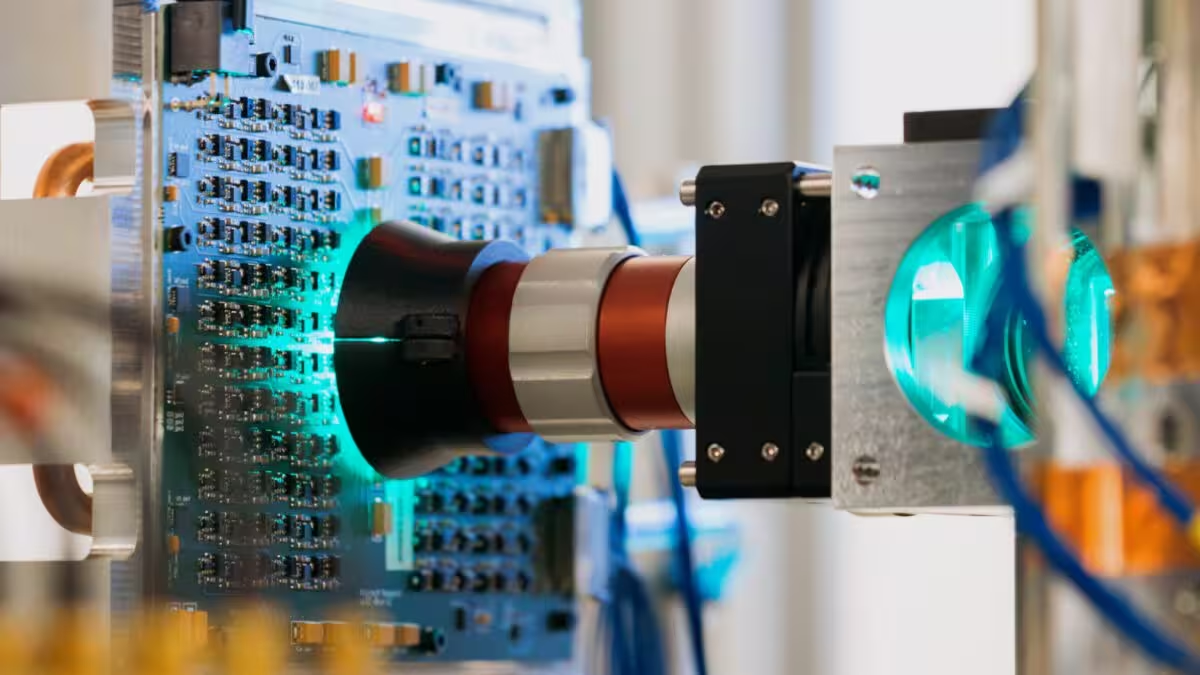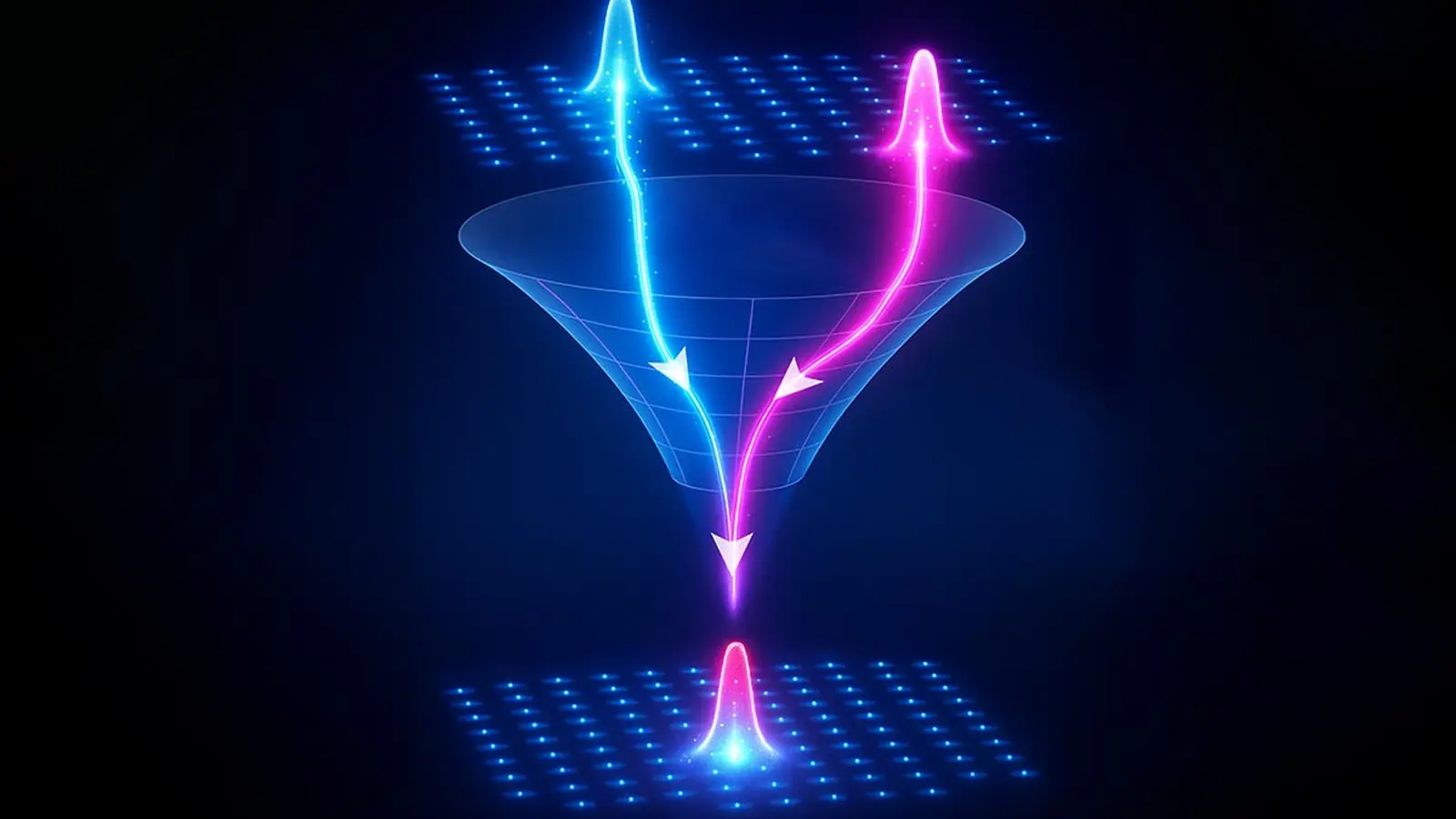5 Minutes
Imagine optical hardware that doesn't need switches, control signals, or firmware to steer light. Engineers at USC have shown that photons can be made to find their own way through a device by following thermodynamic rules — a shift that could simplify and speed up future computing and communications hardware.
Turning chaos into a predictable flow
Nonlinear, multimode optical systems have long been treated as too messy for reliable engineering. Their many interacting modes generate complex behavior that resists simulation and conventional design. But the USC team reframed that complexity as an advantage. By applying ideas from thermodynamics to light, they developed a theoretical framework called optical thermodynamics that explains how light redistributes energy and finds equilibrium inside a nonlinear lattice.
Think of it like a self-adjusting marble maze. Instead of manually lifting barriers to guide a marble to its destination, the maze itself is built so the marble rolls to the correct exit no matter where it starts. In the USC device, light undergoes a similar two-step process — an optical analogue of expansion followed by thermal equilibration — which drives photons naturally into a chosen output channel.
A device that routes light without switches
Published in Nature Photonics, the team's demonstration is the first optical device explicitly designed with optical thermodynamics in mind. Rather than relying on arrays of electronic switches and precise digital control, the device leverages intrinsic nonlinear dynamics so the light organizes its own route. The result is routing by physics instead of routing by electronics.

How the thermodynamic analogy works
- Expansion and redistribution: Light injected into the system spreads and redistributes much like a gas expanding in a chamber.
- Equilibration: Through nonlinear interactions, the photon distribution relaxes toward a predictable steady state, analogous to thermal equilibrium.
- Directed output: The device geometry and nonlinear lattice guide that equilibrium into a designated output channel without external gates.
Why this matters for computing and communications
As electronic systems approach physical limits for speed and energy efficiency, optical interconnects are emerging as a powerful alternative for high-performance computing and data centers. But current optical routers and switches often add complexity, latency, and power overhead. A self-organizing approach reduces that burden by embedding routing behavior into the physics of the device itself.
That opens potential improvements across telecommunications, secure data transfer, and photonic chips used by companies building next-generation accelerators. Devices that harness natural photonic dynamics could be faster, simpler, and more energy efficient than circuit-heavy counterparts.
From lab theory to real-world devices
The USC team, including lead author Hediyeh M. Dinani and senior researcher Demetrios Christodoulides, emphasize that optical thermodynamics does more than route light. It provides a new design language for exploiting nonlinear systems rather than fighting them. This could inspire a broader class of photonic components and information-processing schemes that operate by designating physical end states rather than issuing control commands.
Of course, practical adoption will require scalability, integration with existing platforms, and engineering to tolerate fabrication variability. Still, the work reframes a once-daunting problem as a design opportunity: the unpredictability of nonlinear optics becomes a tool for building devices that solve real routing and signal management challenges.
What to watch next
Researchers will be looking at how optical thermodynamics can be adapted to different wavelength bands, tighter photonic integration, and complex network topologies. Could entire optical networks self-organize their traffic? Could photonic processors use thermodynamic endpoints as computation primitives? These are the kinds of questions the study raises — and they point to an emerging frontier where physics and engineering meet to simplify the way data moves.
For readers curious about the science, the proof-of-concept device and the supporting theory are described in the Nature Photonics paper by the USC Viterbi group, marking a foundational step toward turning nonlinear optical complexity into practical, self-organizing photonic systems.
Source: scitechdaily
Comments
Reza
is this even true? seems like neat physics, but real networks have noise, fab errors, and weird edge cases. skeptical, curious tho
atomwave
Wow this flips the script on optical routing. If photons really self-route, datacenter latency and power drop big time, but can it scale?


Leave a Comment